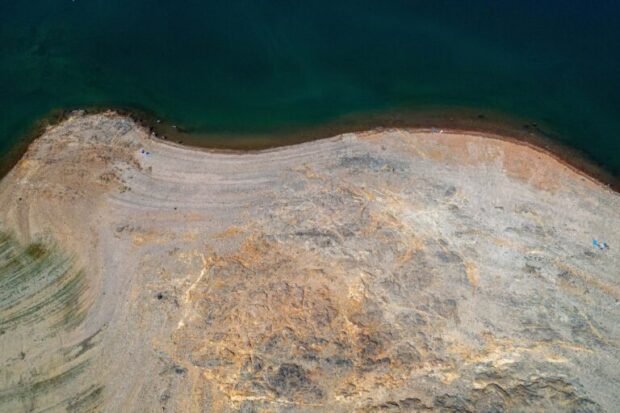La Nina, the cooling of the equatorial Pacific that shifts weather patterns the world over, is fading away. But California may still be prone to dryness, and the U.S. Gulf Coast faces the risk of another busy hurricane season.
Water temperatures in the Pacific Ocean will likely return to normal in the next few months, the U.S. Climate Prediction Center said in a report Thursday.
“The transition to neutral at this point is a fairly sure thing,” said Michelle L’Heureux, a forecaster at the CPC. “What month it will occur is still open, but in May, June, and July we have an 80% chance of neutral.”
La Nina happens when the atmosphere above the equatorial Pacific reacts to cooler waters, depriving California and the West of rain and snow, allowing more hurricanes to grow in the Atlantic, causing dry conditions in parts of Argentina and flooding rains through Indonesia and across northern Australia.
La Nina helped push this year’s winter storms away from the Golden State, leaving nearly 91% of its land gripped in drought, according to the U.S. Drought Monitor. But some scientists say the impacts of La Nina are exacerbated by climate change, which allows high pressure to build off the coast, also keeping rain and snow away and causing the dry weather that favors wildfires.
And like La Nina, neutral conditions often mean less wind shear across the Atlantic, allowing more storms to grow. Last year the Pacific was in neutral or La Nina during much of hurricane season when a record 30 storms roared out of the basin, including 12 that hit the contiguous U.S.
L’Heureux said predicting what the Pacific will bring in the later half of 2021 is difficult, in part because forecasts made in April tend to be the least accurate.
About the photo: People sit on a dried lake bed at Folsom Lake in Folsom, California, U.S., on Wednesday, March 31, 2021. Much of the U.S. West is facing the driest spring in seven years, setting up a climate disaster that could strangle agriculture, fuel deadly wildfires and even hurt power production.





















 Good Times for U.S. P/C Insurers May Not Last; Auto Challenges Ahead
Good Times for U.S. P/C Insurers May Not Last; Auto Challenges Ahead  Insurance Costs, Climate Concerns Factor Heavily in U.S. Home Buying Decisions
Insurance Costs, Climate Concerns Factor Heavily in U.S. Home Buying Decisions  First Atlantic Hurricane Forecast for 2026 Suggests Season Close to 30-Year Norm
First Atlantic Hurricane Forecast for 2026 Suggests Season Close to 30-Year Norm  Is the AI Boom a Bubble Waiting to Pop? Here’s What History Says
Is the AI Boom a Bubble Waiting to Pop? Here’s What History Says 






